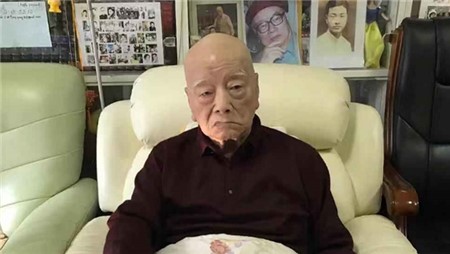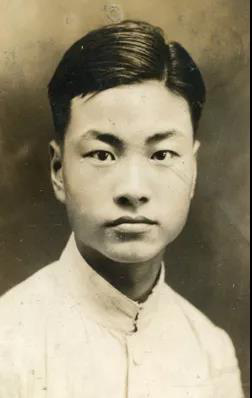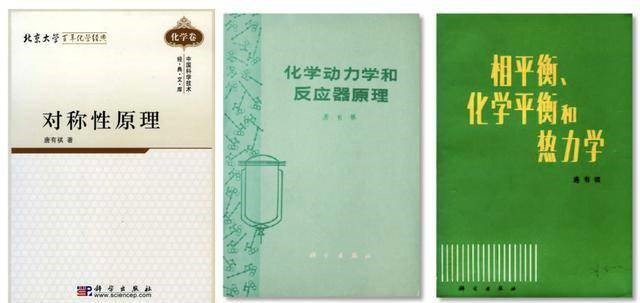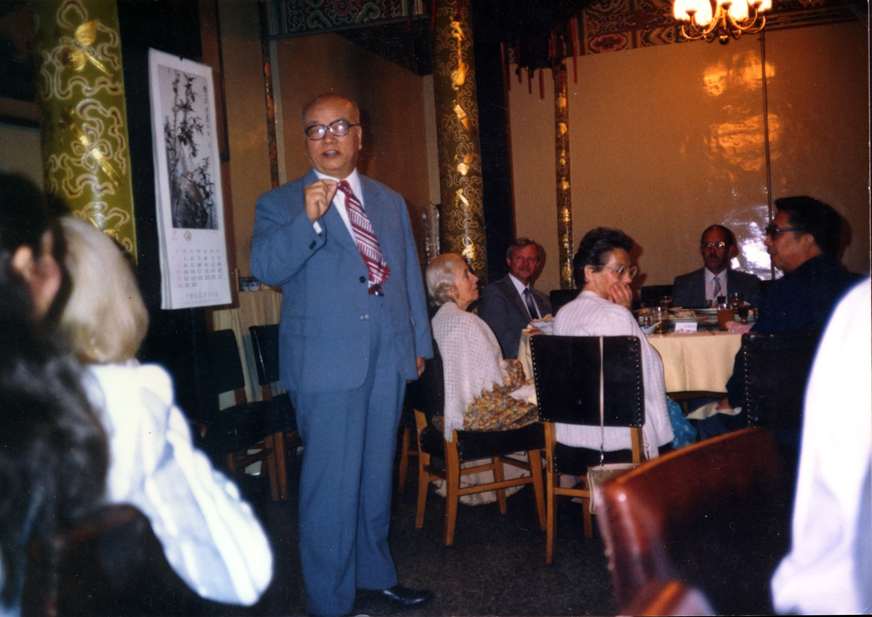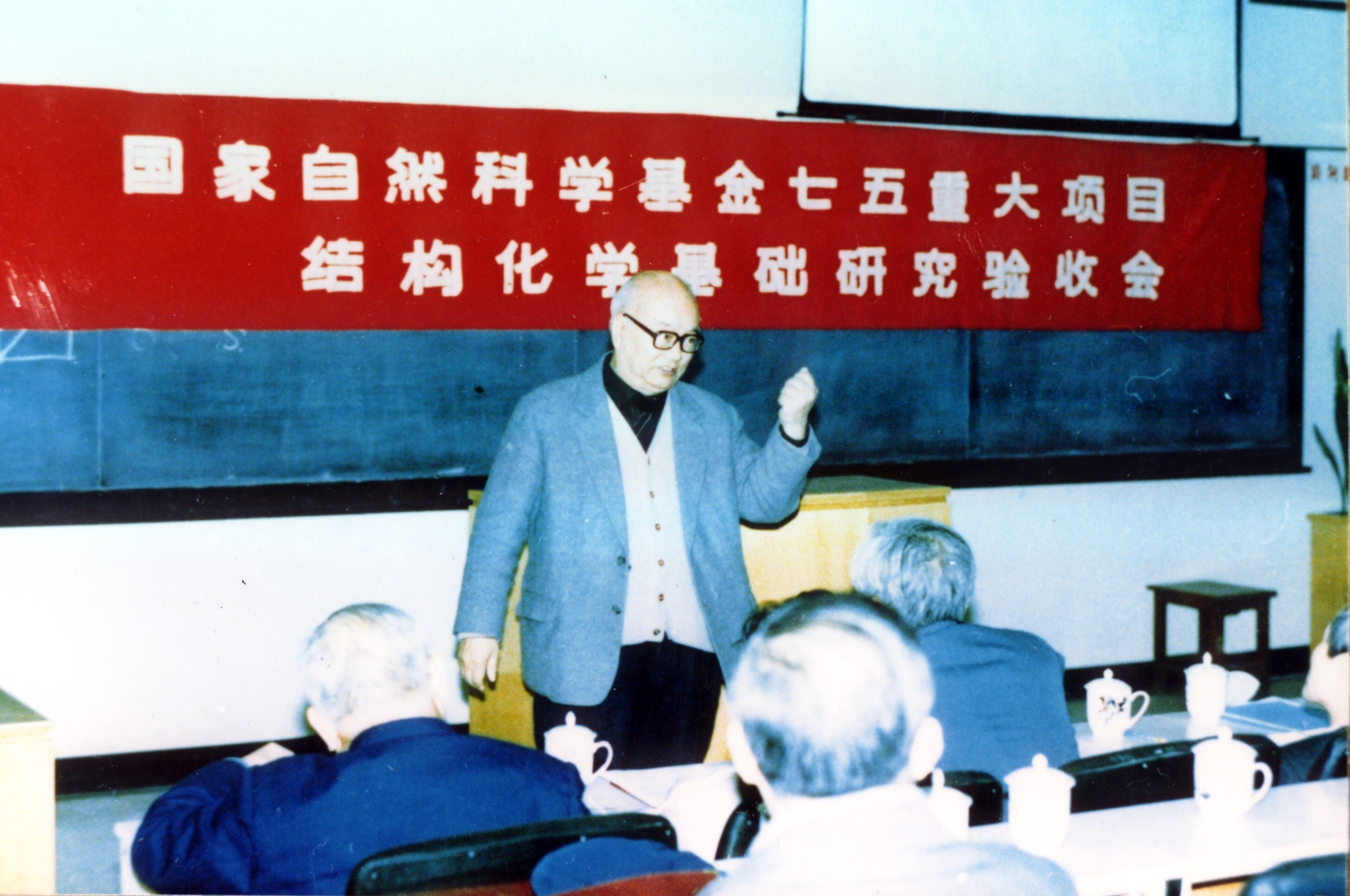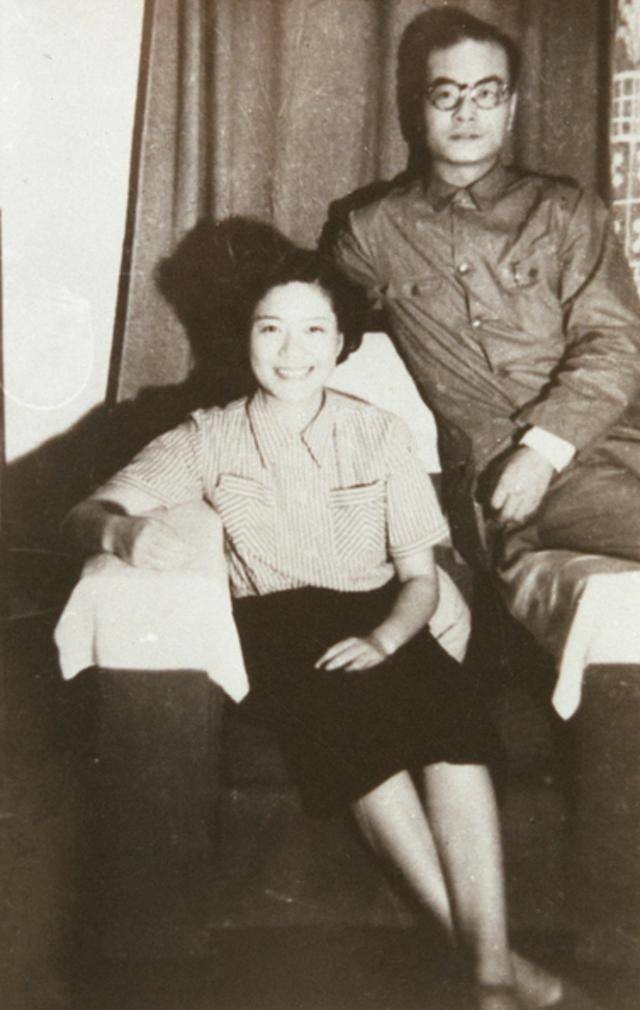Tang Youqi: A century of devotion to science, society and his homeland
Jul 23, 2020
Peking University, July 23, 2020: Tang Youqi is primarily known for his role as a chemist and as an educator. Extending beyond these titles, he is also a member of the Chinese Academy of Sciences and professor of the College of Chemistry and Molecular Engineering at Peking University. Over the course of his career, Tang has made insurmountable contributions to areas of crystal chemistry, chemical biology and molecular engineering. On top of that, he has tirelessly devoted himself to the betterment of his country. His continual efforts have contributed to the recognition and awareness of science over the course of the establishment of the People’s Republic of China.
Tang Youqi
Early years
Born in 1920, Tang bore witness to the turns of China’s tumultuous history. Tang was born into a humble family in Xinchang village of Shanghai’s former Nanhui district (now New Pudong district). Tang enjoyed a relatively carefree childhood in his then small, idyllic, waterside town. He began his schooling in 1925, and at the age of just 11, he left his home to study in Nanhui District Middle School. It was during these formative years that Tang first came into contact and thus developed a deep interest in modern science. After graduating from high school in 1937, the Second Sino-Japanese war broke out. Following the encroachment of the Japanese invasion, Tongji University, where Tang was admitted, relocated from Shanghai to multiple cities. Against all odds and despite ever worsening conditions, Tang graduated from the campus in Sichuan, and his vigor was unbroken.
Tang in his second semester of senior year in high school in 1936
After Tang’s graduation, the war against Japan had reached new heights. Tang rose to responsibility, hoping to utilize his knowledge and technical skills in service of his country. In July of 1942, Tang went to Kunming and began to help in wartime production. Afterwards, he put his knowledge to work and founded an experimental production facility, through which he headed research into replacement solutions for dwindling domestic supplies of silicon steel, crucial in motors and transformers. Despite being offered a placement for exchange in the U.S, Tang saw it more important to see through this work though until China’s eventual victory agaisnt Japan in 1945.
In August of 1945, Tang returned to Shanghai after eight long years away. Upon returning, he was invited to teach chemistry in the Medical School of Tongji University. During his time working as a professor, Tang continually strived to find pragmatic application in his research and previous training. Tang saw chemistry as an important stepping stone to the development and implementation of material science in China’s future development, hence he became an integral player at the forefront of China’s budding field of chemistry research. Time and time again, Tang’s devotion to science was instrumental in China’s increasing reliance on chemical and technological development.
One year later, Tang boarded a ship bound for San Francisco, where he was set to study in the California Institute of Technology under renowned chemical engineer Linus Pauling who, seeing Tang’s potential, took Tang under his wing. After Tang received his Ph.D. in 1950, he and Pauling went from student and teacher to fellow researchers. During this time, Tang became one of the first people to research protein crystallization and molecular biology, laying the foundations for research for generations to come.
Laying the foundation for research and education
After returning to China, Tang, who was widely sought-after, was offered positions in top universities across China. He recognized the lack of resources, teachers and equipment for the study of structural chemistry in China. At Peking University, Tang began to lay the foundation for structural chemistry. Working with a blank slate, Tang wrote his own textbooks, as well as setting up a new curriculum that could provide standardized training to chemistry teachers across the country.
Despite the series of historic upheaval during the late 20th century, Tang’s quest to uncover the structure of crystallized insulin particles continued. In 1965, Chinese scientists were the first to artificially synthesize crystallized insulin. It was the first time that a bioactive protein was synthesized by artificial means on a global scale, a remarkable breakthrough for Chinese scientific research. Following the success, Tang refocused his research on the determination of the spatial structure of insulin, with the intention of bridging the gap between the protein structure of insulin and its possible applications. Given Tang’s convincing and well-equipped research proposal, he was then appointed the leading figure in the research of crystallized insulin structures. In 1969, Dorothy Hodgkin, a prominent chemist from the University of Oxford, announced the detection of insulin crystal structures. Following the shocking news, Tang’s research team picked up their pace, and eventually were able to fully determine the crystallized structure of porcine insulin in 1971, with a resolution higher than that of Hodgkin’s team.
Tang’s dedication to scientific research marks him as one of the pioneering Chinese scientists in the 20th century. Not only has he established himself as a pronounced researcher, Tang is also a highly-respected educator and author in physical chemistry. In 1964, he published his first book based on handouts he wrote when he taught statistical mechanics at Peking University, detailing the principle and logic of statistical mechanics and its practical applications. The book, Statistical Mechanics and its Application in Physical Chemistry, won the National Excellent Textbook Award in 1988, and became the foundation for numerous books and research in this field. Other than this prominent achievement, Tang published the first and second volumes of The Principles of Symmetry in 1977 and 1979 respectively, both of which were selected into the “Century-old Chemistry Classics of Peking University” and thus republished. Along with these highly noteworthy achievements, Tang has also written many other textbooks that are now held with great esteem at top universities across the world.
Some of the textbooks written by Tang
The unwavering devotion to China’s scientific community
Another one of Tang’s achievements has been his role in the development of the silver catalyst for ethylene oxide in 1974. Tang wanted to contribute to the advancement of chemistry in his beloved country. Initially, due to the differences that existed between theoretical and practical research, Tang and his research team were repeatedly rejected by various authorities. Rejection eventually became so prevalent that many members of Tang’s team were discouraged and overwhelmed by frustration. However, Tang remained level-headed and proposed a second solution. He requested a joint cooperation with a competent research institute that was qualified for the project. In the end, members of the research institute agreed on the partnership and Tang’s research team were finally given the opportunity to develop the silver catalyst for ethylene oxide. When the catalyst was finally developed, the catalytic performance reached all of its expected targets. This result attracted extensive attention from international science community. In 1986, the development of the silver catalyst for ethylene oxide and other research findings were awarded first place in scientific advancement by the State Education Commission.
With countless accolades in the field of physical chemistry, many might assume that Tang’s contributions are limited to areas related to statistical mechanics and crystallized structures. Surprisingly, Tang excelled across numerous fields. He was also the first person who saw the potential of protein research and, in 1979, proposed the idea of protein engineering. Today, this exact field in biochemistry has become a frontier in protein structural research and drug design. Tang, being extremely well-versed in biological sciences (particularly biochemistry), also noticed the lack of recognition for the biological sciences, particularly in terms of research. In the following years from 1989 to 1992, he made numerous efforts promoting biochemical research across the nation. In 1991, Tang created a research network aiming to provide an ever-growing foundation for Chinese biochemical research. Under the guidance of Tang, many crucial biochemical topics such as protein engineering, sugar and nucleic acid functions, and biological molecules with catalytic capabilities were finally brought to light and methodically researched in China. Over the next few years, biochemistry was established as a highly regarded academic field in China, with many research centers dedicated to biochemical research being set up subsequently across the country. With Tang paving the way, biochemistry was able to find its place as an instrumental field of scientific research in China.
Tang making an address during a dinner party at the International Conference on Small Molecular Structures in 1986
Tang delivering a speech in 1991
A role model inspiring future scientists and educators
Tang's perseverance, expertise, life experiences and dedication to his work have inspired countless aspiring students who eventually became significant scientists and educators. Wei Yongge, who was admitted to Peking University in 1991 as a Ph.D. candidate, was grateful for Tang, because Tang was the first teacher who embraced him into the scientific research community when he was just a young student with a modest background. Wei mentioned that Tang was always amicable, encouraging and unjudgmental when he gave advice to students. Tang was the first person who showed Wei how to draft research proposals, design research projects and write professional scientific research papers. Wei was eventually able to embark on the journey of science independently and transform into a pioneering scientist with the fundamental skill set Tang has taught him. Qian Minxie, professor of the College of Chemistry and Molecular Engineering at Peking University, was also a former student of Tang. Qian spoke highly of Tang's work ethic as a scientist, the persistence to always seek truth from facts, the attention to research details and the dedication to work. Tang was a prime role model for many upcoming scientists during his time, influencing the Chinese scientific community for decades to come.
Setting up a new scholarship fund for top students
Tang's wife, Zhang Lizhu, is also an influential scientist. She is a prominent medical scientist pioneering in modern reproductive medicine. After they were married at the beginning of 1952, Zhang went to Beijing with her husband and was appointed to work in a hospital affiliated with Peking University. Zhang proceeded to conduct her research there. Since 1982, Zhang has dedicated much of her life to the research about in vitro fertilization. After overcoming countless obstacles, Zhang and her team finally reached fruitful results by developing China’s first test-tube baby born on March 10, 1988.
Zhang Lizhu and Tang Youqi
On July 11, 2020, Tang celebrated his 100th birthday. His long-list of contributions to both the university and the country has been paramount. A scholarship fund in the name of the couple was set up on the same day. Students with outstanding academic performance in the College of Chemistry and Molecular Engineering and Health Science Center of Peking University are eligible for the “Peking University Tang Youqi-Zhang Lizhu Scholarship Fund.”
As a legend in many more ways than one, Tang has carved out his place as one of the most significant scientists in China today. Tang has also demonstrated his unwavering devotion not just to his research but also to his homeland. In difficult times, he remained calm and stopped at nothing to respond to the call of his country. He was unwavering in his greater goal of building up the Chinese scientific community, changing the course of scientific research in China and playing a key role in China’s development.
Written by: Rose Li, Jacob Tomkins
Edited by: Huang Weijian
Source: PKU News (Chinese)
